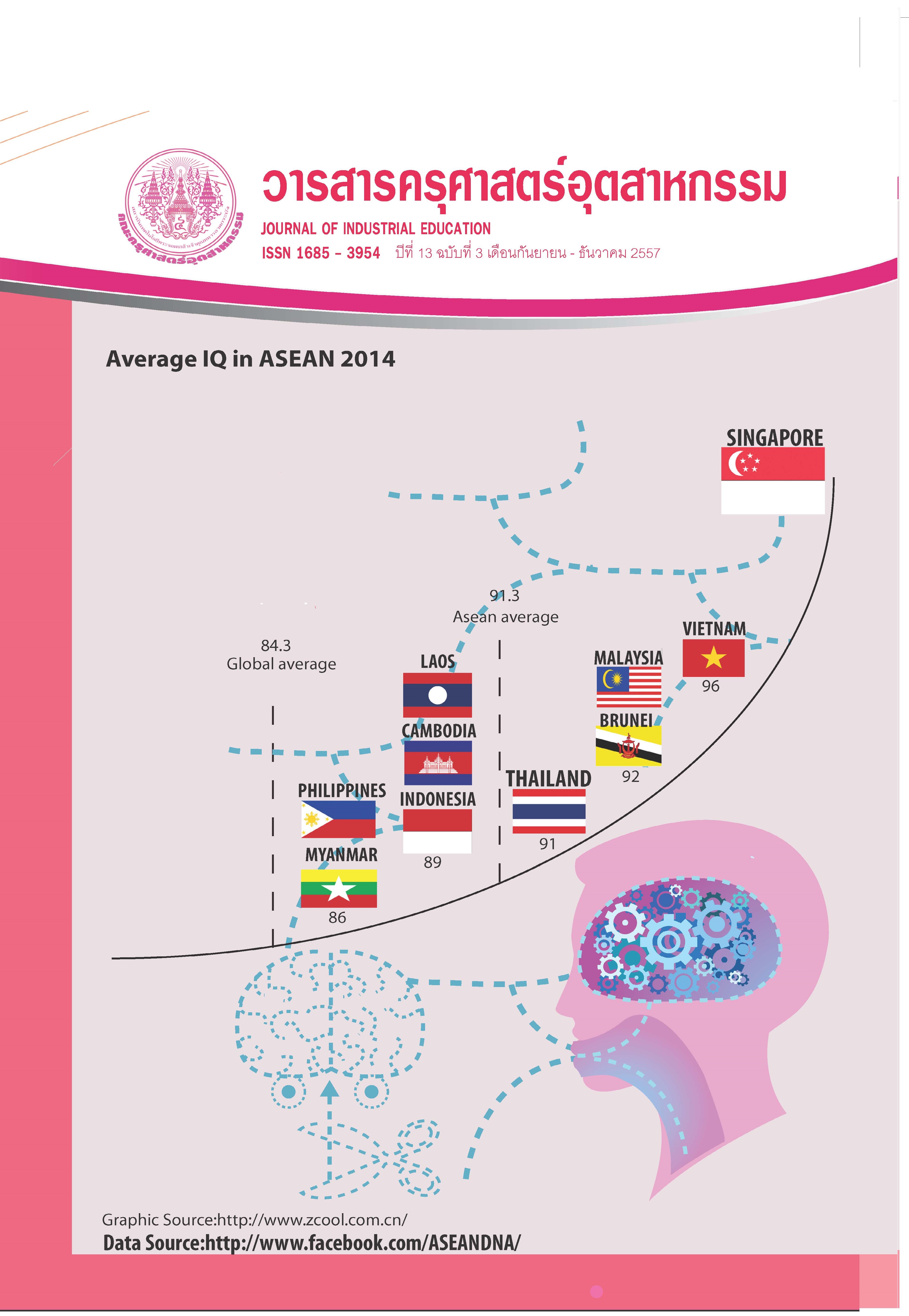The Development of Instructional Model According to the Concept of Contemplative Education to develop the Discipline of Secondary Students
Keywords:
Instructional Model, Discipline, Contemplative Education, Secondary students, Phrapariyattidhamma Schools under the General Education DivisionAbstract
The objectives of this research were to study factor of the discipline, to develop of Instructional model according to the concept of contemplative education and to study the result of applying the instructional model according to the concept of contemplative education for enhancing secondary students’ discipline. There were three stages to achieve the research. The first stage was factor analysis of discipline. The samples of this research were 840 Matthayomsuksa 1 students of 12 overall groups of phrapariyattidhamma schools under the general education division during the first semester of the academic year 2013, being a multistage random sampling. The tools were a interview form and questionnaire with the reliability of 0.94. Data collection by using Booklet Matrix Sampling. The statistics for data analysis were reliability and exploratory factor analysis by using LISREL program version 9.10 with activation code : 6EC5-311D-BBB9-57CD. The second stage was to the development of Instructional model according to the concept of contemplative education, the tool was the evaluation of the model. The five experts examined the quality of developed model with high level of satisfaction of the model and showed that the model was appropriate to bring to trial. The third stage was to study the result of applying the instructional model according to the concept of contemplative education, the experimental research methodology was carried out by the time-series design. The samples of this research were 50 Matthayomsuksa 1 students of Mahavajiralongkornrajavidyalaya school during the second semester of academic year 2013, being a multistage random sampling and a simple random sampling the students in two group of fifty : the experimental group being taught by the instructional model according to the concept of contemplative education, and the control group being taught by regular learning modelwithin 6 weeks of operation. Data collection from the disciplinary test and a observation form. The statistic used in this research were Mean, Standard Deviation and Repeated Measures One-Way ANOVA.
The results were as follows :
1. The factors of the secondary students’ discipline were as follows : discipline in duty, self discipline, organization discipline, lay person and novice discipline, and novice discipline with the construct validity of structural model from the exploratory factor analysis, the chi-square goodness of fit test was 453.28, df = 206, p-value = 0.00, RMSEA= 0.038, GFI = 0.95, AGFI = 0.93, CFI= 0.98, RMR= 0.52, and CN = 475.10.
2. The Instructional model according to the concept of contemplative education for enhancingsecondary students’ discipline was composed of 4 factors as follows : 1) the theory/principle/concept of model 2) the objectives of model 3) the step of learning activities which were 5 sub-steps as; 1. trust 2. information 3. activities 4. reflection and 5. action 4) measurement and evaluation of model.
3. The result of development the instructional model according to the concept of contemplative education for enhancing students’ discipline found that the organization discipline of experimental group was better than the control group as significance of .05 level at (F = 893.27). The organization discipline of students were permanent behavior at .05 level (F=90651.76) and the behavior of organization discipline had higher than before the experiment at .05 level (F = 5797.76).
References
[2] กระทรวงศึกษาธิการ. 2551.หลักสูตรแกนกลางการศึกษาขั้นพื้นฐาน พุทธศักราช2551.กรุงเทพฯ : โรงพิมพ์ชุมนุมสหกรณ์การเกษตรแห่งประเทศไทย.
[3] นวลศิริ เปาโรหิตย์. 2540. จะสร้างวินัยให้เด็กยอมรับอย่างไร. วารสารแนะแนว, 31 (167), น. 31-34.
[4] กระทรวงศึกษาธิการ. 2555. คำขวัญวันเด็ก.[ออนไลน์]. เข้าถึงได้จาก: https://www.moe.go.th.(วันที่ค้นข้อมูล: 17 ธันวาคม 2555).
[5] พระธรรมปิฎก (ป.อ. ปยุตโต). 2543.พจนานุกรมพุทธศาสตร์ ฉบับประมวลธรรม.กรุงเทพฯ : มหาจุฬาลงกรณราชวิทยาลัย.
[6] อัคพงศ์ สุขมาตย์. 2553.การพัฒนาหลักสูตรเสริมสร้างคุณลักษณะที่พึงประสงค์ของนักเรียนชั้นประถมศึกษาปีที่ 4 ตามแนวคิดจิตตปัญญาศึกษา.ปริญญานิพนธ์การศึกษาดุษฎีบัณฑิต สาขาการวิจัยและพัฒนาหลักสูตร บัณฑิตวิทยาลัย มหาวิทยาลัยศรีนครินทรวิโรฒ.
[7] ราชบัณฑิตยสถาน. 2551.วารสารครุศาสตร์อุตสาหกรรม พจนานุกรมศัพท์ศึกษาศาสตร์ อักษร A-L. กรุงเทพฯ: อรุณการพิมพ์.
[8] Christopher D. Sessums. 2007. Contemplative practice : Transforming the meaning of education. [online]. Retrieved from https://eduspaces.net/csessums/weblog/145790.html (December 24, 2008).
[9] รุจิร์ ภู่สาระ และคณะ. (ม.ป.ป.). แบบเรียนแนวหน้าชุดพัฒนากระบวนการหลักสูตรใหม่กลุ่มสร้างเสริมลักษณะนิสัย 6. กรุงเทพฯ : อักษรเจริญทัศน์.
[10] ธิติมา จักรเพชร. 2544. ผลของชุดการแนะแนวที่มีต่อความมีวินัยในตนเองของนักเรียนชั้นมัธยมศึกษาปีที่ 1 โรงเรียนสุเหร่าแสนแสบกรุงเทพมหานคร. ปริญญานิพนธ์การศึกษามหาบัณฑิต กรุงเทพฯ : มหาวิทยาลัยศรีนครินทรวิโรฒ.
[11] เทพพร มังธานี. (ม.ป.ป.). มงคลชีวิต.กรุงเทพฯ : แอลซีพี ฐิติพร การพิมพ์.
[12] กร กองสุข. 2548. การดำเนินงานเพื่อเสริมสร้างวินัยด้านความรับผิดชอบโรงเรียนสามัคคีพิทยาคมอำเภอโนนสุวรรณ จังหวัดบุรีรัมย์. การศึกษาค้นคว้าอิสระ การศึกษามหาบัณฑิต มหาวิทยาลัยมหาสารคาม.
[13] สุมน อมรวิวัฒน์. 2530. การสอนโดยสร้างศรัทธาและโยนิโสมนสิการ. กรุงเทพฯ : โอ.เอส.พริ้นติ้ง เฮ้าส์.
[14] ชัยวุฒิ หอมศิริ อรรถพร ฤทธิเกิด และฉันทนา วิริยเวชกุล 2552. บทเรียนคอมพิวเตอร์ช่วยสอน เรื่อง คุณธรรม. วารสารครุศาสตร์อุตสาหกรรม, 8(2), น.147-153.
[15] กิตติชัย สุธาสิโนบล. 2555. การจัดการเรียนการสอนตามแนวพุทธก้าวสู่ความเป็นมนุษย์ที่สมบูรณ์. ราชบุรี : ธรรมรักษ์การพิมพ์.
[16] พระพรหมคุณาภรณ์ (ป.อ. ปยุตโต). 2552.พุทธธรรม ฉบับปรับปรุงและขยายความ.พิมพ์ครั้งที่ 11. กรุงเทพฯ : มหาวิทยาลัยมหาจุฬาลงกรณราชวิทยาลัย.
[17] สุรางค์ โค้วตระกูล. 2550. จิตวิทยาการศึกษา.พิมพ์ครั้งที่ 7. กรุงเทพฯ : จุฬาลงกรณ์มหาวิทยาลัย.
[18] ดวงเดือน ศาสตรภัทร. 2547. พัฒนาการทางสติปัญญาตามทฤษฎีของเพียเจท์.กรุงเทพฯ : ภาควิชาจิตวิทยา มหาวิทยาลัยศรีนครินทรวิโรฒ
[19] ประเวศ วะสี. 2550. มหาวิทยาลัยกับจิตตปัญญาศึกษาและไตรยางค์แห่งการศึกษา.กรุงเทพฯ : ศูนย์จิตตปัญญาศึกษา มหาวิทยาลัยมหิดลและแผนงานพัฒนาจิต เพื่อสุขภาพ สนับสนุนโดยสำนักงานกองทุนสนับสนุนการสร้างเสริมสุขภาพ.
[20] นิเทศ สนั่นนารี. (2547, สิงหาคม). แนวทางการให้การศึกษาตามแนวพุทธลีลาในการสอน :วิธีสอนที่ยึดผู้เรียนเป็นสำคัญ. วารสารวิชาการมหาวิทยาลัย ภาคตะวันออกเฉียงเหนือ, 2 (ฉบับพิเศษ),น. 150-156.
[21] ปิยลักษณ์ พฤกษะวัน. 2554. การศึกษาองค์ประกอบและพัฒนาจิตสาธารณะเด็กปฐมวัยด้วยรูปแบบการเรียนการสอน MADE.ปริญญาการศึกษาดุษฎีบัณฑิตสาขาวิชาการศึกษาปฐมวัยบัณฑิตวิทยาลัย มหาวิทยาลัยศรีนครินทรวิโรฒ.
[22] ศูนย์จิตตปัญญาศึกษา มหาวิทยาลัยมหิดล. 2551.หนังสือรวมบทความการประชุมวิชาการประจำปี 2551. นครปฐม : ศูนย์จิตตปัญญาศึกษามหาวิทยาลัยมหิดล.
Downloads
Published
How to Cite
Issue
Section
License
"The opinions and contents including the words in papers are responsibility by the authors."
"ข้อคิดเห็น เนื้อหา รวมทั้งการใช้ภาษาในบทความถือเป็นความรับผิดชอบของผู้เขียน"



